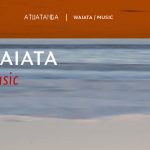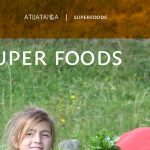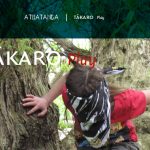Tikanga and rohe
Tikanga is a guide on how to do things the best way.
Tikanga didn’t just happen. Every situation has a tikanga. How to do a job the best way took a long time to work out. At first people tried to do something and probably failed. Then they tried again and again until they found the best way to do it. Then they could pass on this information to someone else.
But remember that not much stays the same so if you are on the spot you know about changes and can adapt to find new best ways.
Each big family or hapu has its own tikanga because each hapu has a rohe or boundaries that includes land and sea. Learning all the important parts of your place takes a lot of exploring and time to sit down to get to know your home – the land, the waterways, the sky and everything that lives on and in them really well.
You want to know things like
- Where does the sun rise and set at different times of the year? How long is the sun in the sky at different times of the year and how does that help things to grow?
- What clouds mean there is going to be rain? If there is rain what signs show us there is going to be a flood?
- When the wind blows from any direction what does that mean?
- Where do different birds live and why do they choose that place?
- What kinds of rivers or streams do different fish like and why?
- What is the life cycle of those fish?
Learning about the natural world helps us. When we work out how to use what we need without that being bad for the different parts we can live in the same place for a long time.
There are old names for all sorts of places. Each stream, hill, valley, plain, even some trees had names. But even now, once we get to know something really well we can give it a name because that is how we remember what is special about that place or something that lives at a place. Most of the time naming somewhere means we look after it better too.
Rohe
This is why we have ROHE. Today Wairarapa is a region but 150 years ago the Wairarapa was the land around Lake Wairarapa, which was much bigger then than it is today.
Those of us that lived in or around the town of Masterton were in Te Kauru, the upper valley. In Te Kauru there were and are smaller places like Opaki, Manaia, Te Ore Ore and Makoura. In these there were and are smaller places like Ouwaka (Lansdowne Hill) and Akura. These had parts that had names like the Hiona Stream that goes into Henley Lake or the Waipoua River that still has tuna and koura just not as many as there used to be. Knowing where to find something like koura, when is the best time to catch them and when to leave them alone was and is really important.
In the old days the family that had the best knowledge of their rohe, who had the right to use the life in that rohe and most importantly had the responsibility to make sure that the rohe was left in good health once they had gone might call themselves MANA WHENUA, MANA MOANA, MANA TANGATA.
People get a bit confused today about things like iwi/tribes and even that New Zealand is called AOTEAROA by Māori. Māori is the word for, “I am from here” maybe meaning I am from Whakaoriori it does not mean, “ I am a Māori from New Zealand” but when the first people came from Europe they thought Māori must mean the same as saying ,”I am from England so I am English”, or “I am from America so I am American”. There is a legend about how Hine-i-te-aparangi, the wife of the explorer Kupe saw clouds on the horizon during a journey across the Pacific Ocean. She said look at the cloud or Aotearoa so once again when the first Europeans arrived they heard this story and thought the Māori name for New Zealand must be Aotearoa. The people they were talking to were more likely to identify themselves in their own language by saying,” I am Hohepa the son of Matenga I am from this place, for instance Te Ore Ore”. There was no country or regions or even iwi/tribes as we think of them today.
An iwi/tribe with chiefs like kings for the big Rangitāne iwi who live as far apart as modern Manawatu, Wairarapa, Tararua and Blenheim in the South Island was not useful to families. Each of these places has different rivers, mountains, wind, weather and some animals, which is why rohe were close to you because you. You had to know your places really well and you had to be close enough to look after them. Each family would know their whakapapa or family tree from the first one of their ancestors that started living at each place because that is how they got their right to each place. If needed to they could go right back to some of their earliest ancestors who were on the canoes that came from the Pacific Ocean but for day-to-day living everyone needed to know their immediate family and their environment.




